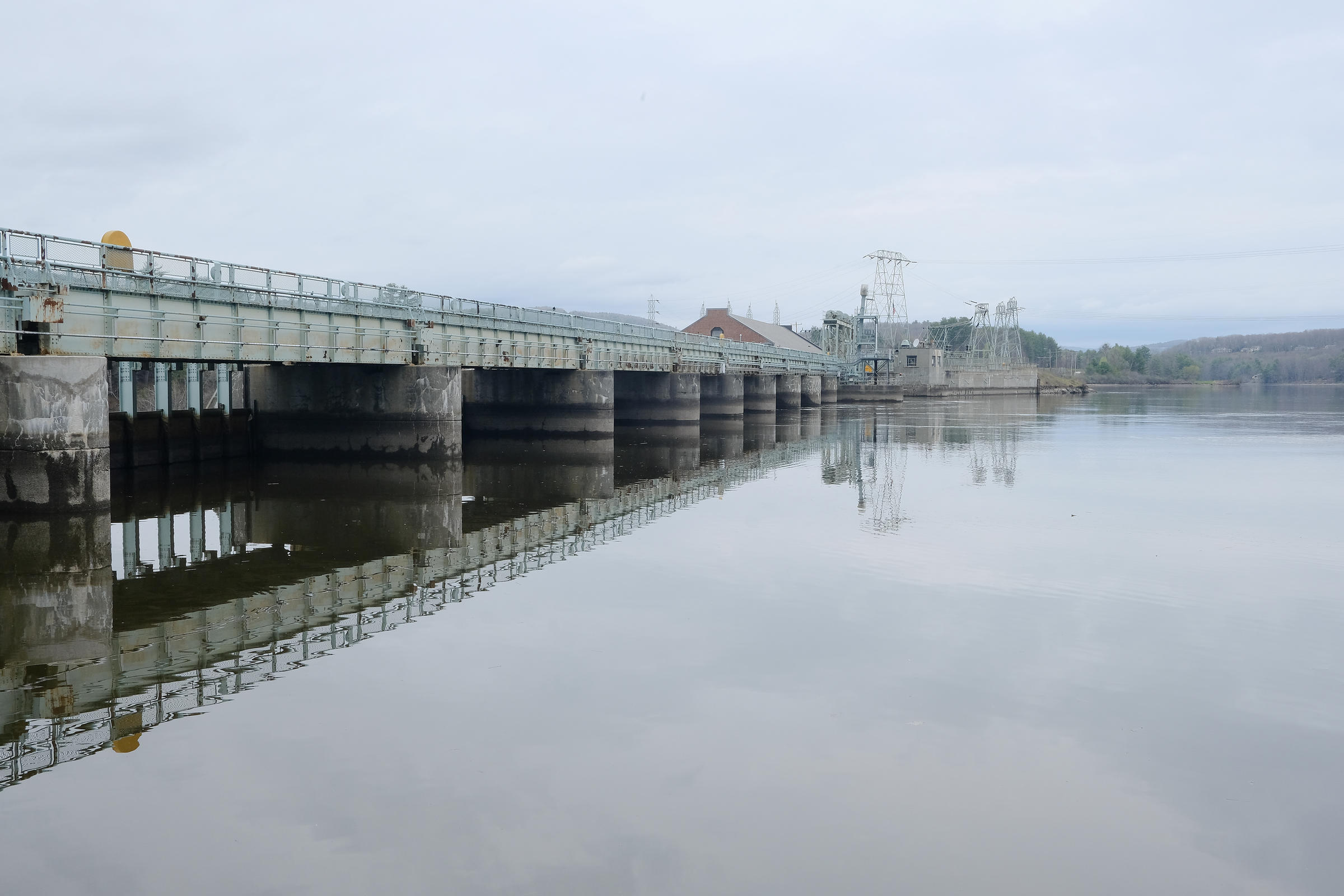

The outlet at most reservoirs was built high enough to allow sediment to gather without blocking it the space below is called “dead pool,” because any water stored there can’t be sent downstream. Sand and other particles flow in with the creek or river that feeds a reservoir, then settle out when the water slows and stills behind the dam. Dams fundamentally alter waterways by severing the flow of not just water, but also things like fish and aquatic insects, seeds and logs - and sediment. When dam-builders were constructing the network of reservoirs that waters the West, they knew that sediment would accumulate. When the dam was newly built, they would’ve needed a crane 70 feet tall to reach the same spot. Some of the workers stood directly on waterlogged sand, digging out the grates with pitchforks. In the fall of 2014, personnel worked 10-hour days for two weeks to clear logs, branches and dirt from the outlet, by hand and with an excavator. Once the sediment was level with the dam outlet, where water is released downstream, any debris that washed into the reservoir threatened to clog the opening and make the dam inoperable. Year by year, sediment quietly collected on the reservoir bottom, gradually raising its floor. The root cause of the problem at the reservoir had been building since the dam was finished in 1962. Once a blockage covers a dam’s outlet grates, “you can’t get the water out.”

“It’s like building a beaver dam around your outlet,” says Tim Randle, the manager of a sedimentation and river hydraulics group for the Bureau of Reclamation. Waterlogged branches and wood, plastered with silt and clay, had accumulated six feet high on the metal grates outside the reservoir’s outlet, partially plugging it. In October 2014, Paonia Reservoir, a skinny, 3-mile-long basin tucked between a winding mountain highway and a forested ridge in western Colorado, had a problem. This story is a part of the ongoing Back 40 series, where HCN reporters look at national trends and their impacts close to home.


 0 kommentar(er)
0 kommentar(er)
